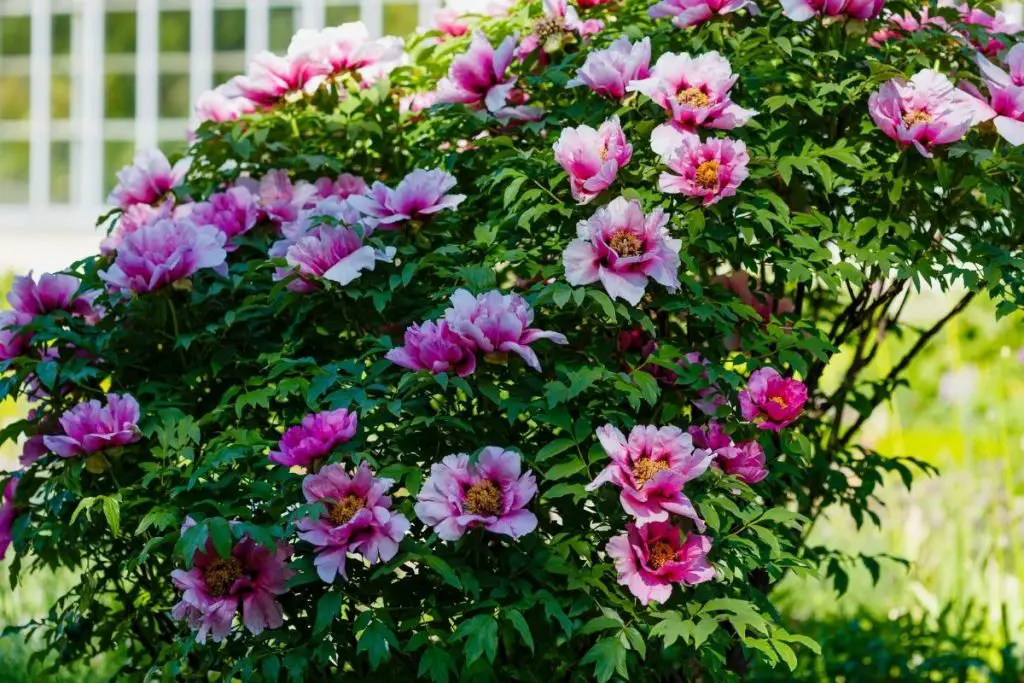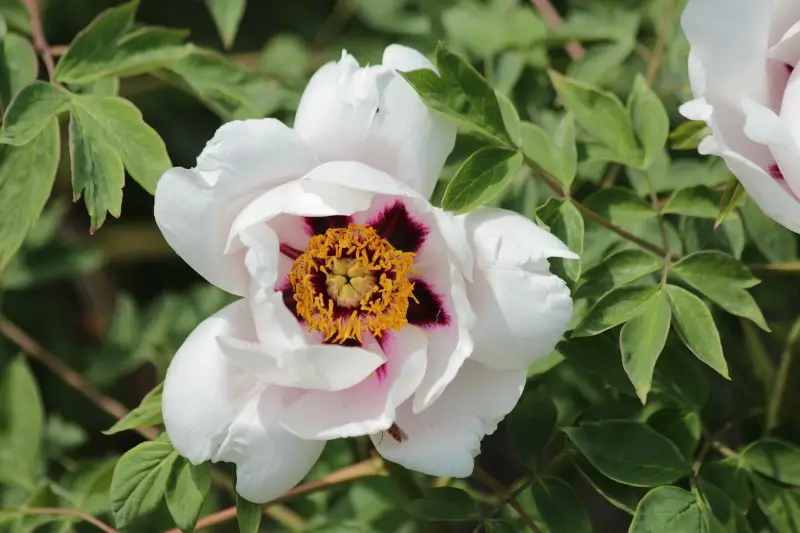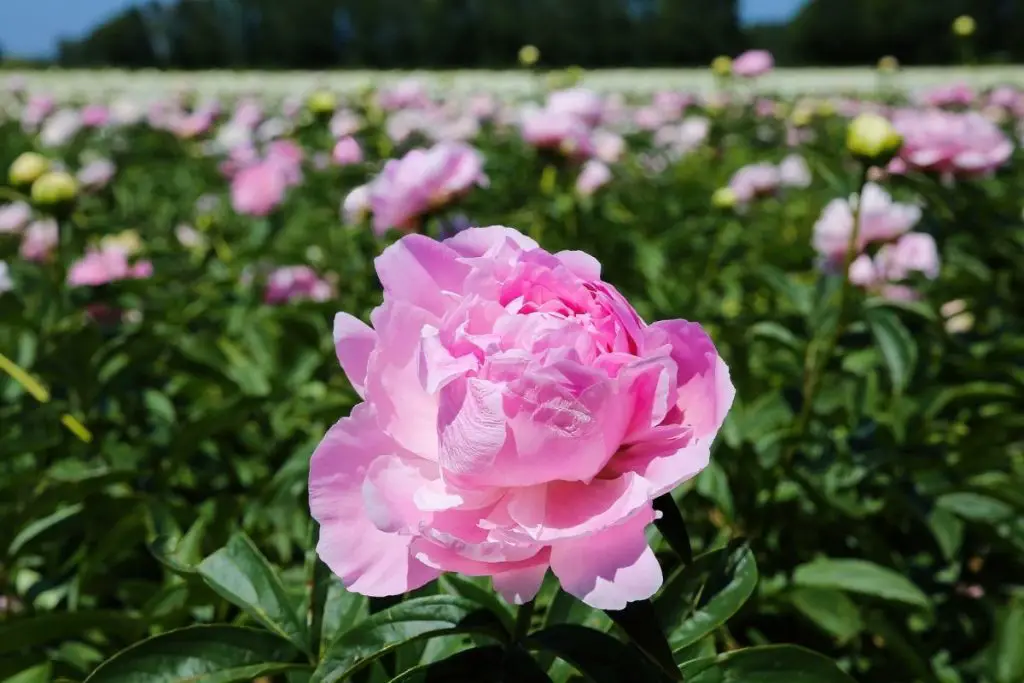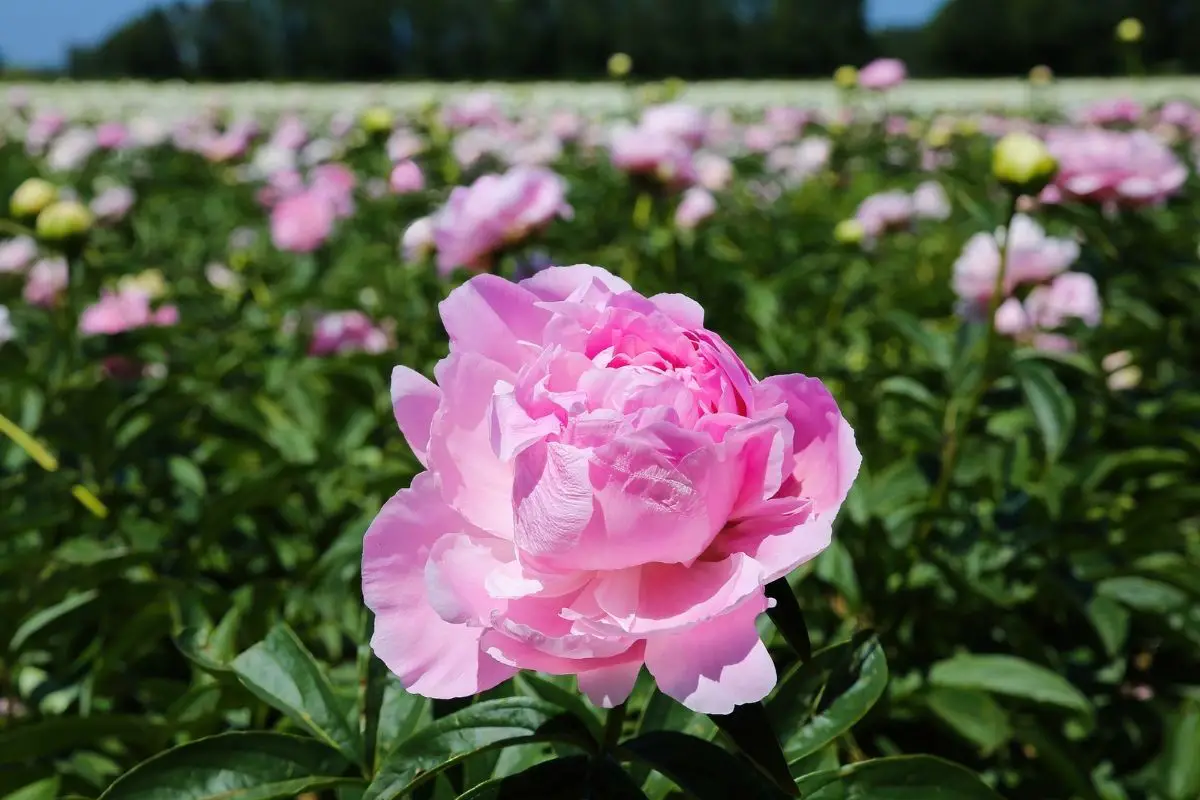Tree peonies are part of the genus Paeonia and are woody shrubs that have attractive foliage and large, beautiful, bowl-shaped flowers.
These peony plants are low maintenance, and with the right care, have been shown to reach up to 100 years in age. Their beautiful and delicate blossoms make them the perfect candidates for either cottage-style or Chinese/Japanese-inspired gardens.
History
Cultivated in China for over a millennium, tree peonies or “mou dan” are featured heavily in Chinese culture and art. They are also revered in Japan and Korea where there are many festivals held each year that celebrate the opening of their blooms.
They flower from mid-spring to early summer and have showy flowers which can grow up to 12 inches wide. Flowers can come in a range of colors and have three distinct forms; single, semi-double, and fully double.
Plant Facts
| Scientific name | Paeonia spp. |
| Common names | Tree Peony, Chinese Tree Peony, Moutan Peony |
| Genus | Paeonia |
| Family | Paeoniaceae |
| Height | 3.ft 0 in. – 6ft. 0 in. |
| Width | 3ft. 0 in. – 6ft. 0 in. |
| USDA Plant Hardiness Zone | 3a, 3b, 4a, 4b, 5a, 5b, 6a, 6b, 7a, 7b, 8a, 8b |
| Origin | China |
| Flower colors | Red, Pink, Yellow, Orange, White, Cream, Purple |
| Blooming season | 7-10 days in mid-spring – early summer |
| Plant/Flower special features | Large, showy flowers |
How to Plant and Grow Tree Peony Bulbs
Tree peonies are usually bought as full-fledged plants or as bare roots and tubers. Plant them in April – November before the first frost in an area protected from strong winds.

Growing Tree Peony Flowers in a Bed
Plant bulbs with the rootstock well below ground level. The graft union (the small bulge at the base of the stem) needs to be at least 6 inches below the top of the soil. Water well to settle in.
Growing Tree Peony Flowers in a Pot
These plants can be grown successfully for several years in containers using the same recommendations as beds. Use soil-based compost in a well-drained container, and do not overwater.
Propagation
Division or layering is the most widely used technique for propagation. Commercially tree peonies are grafted, but this is a difficult process with low success rates.
Division
Divide plants in the fall after flowering, and plant the new divisions before the first frost so the roots become acclimated to their new surroundings.
Gently remove the plant from the ground, keeping the root system intact. Remove any excess soil around the roots. Use a shape knife to divide up the stems, ensuring each stem has roots attached. Replant with the graft union at least 6 inches below the ground.
It is important to bear in mind that these plants like to be left alone, and many can reach 15-20 years of age before division is needed.
Layering
Propagate plants through layering in spring or fall and choose flexible, young shoots which will easily bend. Within 2-3 years, the roots system will be strong enough for the branch to be cut away from the parent plant.

Care and Maintenance
Soil
Tree peony shrubs should be grown in well-draining, fertile, and slightly alkaline soils. Adding iron sulfate to the soil is recommended since iron will help the plant to produce healthier blooms with more vibrant colors.
Water
Water plants regularly during their first year of establishment and dry periods. Wet the soil thoroughly to a depth of around 12-18 inches, and allow the soil to fully dry out in between waterings.
Fertilizer
Fertilize shrubs in spring, and repeat again after flowering has finished. Use a general-purpose fertilizer at 20oz per square yard around the crown. Nitrogen-based fertilizers are not recommended as they can cause spindly foliage and fewer flowers.
Suppress weeds and conserve moisture by mulching with 4 inches of compost or well-rotted manure. Avoid piling of the mulch as this can cause the stems to rot.
Sunlight
Peony trees need full sunlight as those grown in shaded areas will produce fewer flowers. However, the hot afternoon sun can damage their delicate blooms. Gardeners in some Asian countries use the practice of protecting the plants from the midday sun with parasols.
Temperature and Humidity
Tree peony plants are hardy to USDA zones 3-8 but require a cold winter to flower the following spring.
Pest and diseases
They are generally disease-free but are affected by Peony wilt. If found, remove infected parts and safely burn them.
They are susceptible to frost damage which causes buds and leaves to turn black and fall off. Protect the plant with a fleece blanket during cold nights when late frosts might occur.
Grafted tree peonies can suffer from suckering. This is more likely to happen with shallow planting and is treated by removing new shoots with a sharp knife. Peony tree rootstock is normally from P. lactiflora which will produce shiny, red shoots, whereas tree peony shoots are a dull, light red.
Pruning
Tree peonies do not require regular pruning, but the removal of spent flowers and dead shoots in winter is recommended.
After a few years, they can become leggy, and bushier growth can be encouraged by cutting them back by a third in the fall after leaves have died.
Toxicity
Tree peonies are mildly toxic to people and animals if eaten. Symptoms of poisoning include nausea, diarrhea, and vomiting.

Uses of the Tree Peony
These plants are extremely popular as ornamentals and have a huge cultural significance in many parts of East Asia.
They have also been used for medicinal purposes in China for over 2000 years. Today, their root bark is listed in over 1000 Chinese prescriptions as a main raw ingredient.
Common Varieties and Cultivars
With so many types of peony flowers to choose from, below is a list of some of the most beautiful varieties and cultivars of tree peonies:
- P. delavayi “Delavay Peony”
- P. ludlowii “Ludlow’s Tree Peony”
- P. rockii “Rock’s Tree Peony”
- P. suffruticosa “Jing Ge”
- P. suffruticosa “Yachiyo-tsubaki”
- Paeonia “Souvenir de Maxime Cornu”
Conclusion
Tree peonies are long-lived perennials with beautiful and celebrated blooms. These low-maintenance, woody shrubs are well suited to cottage style or Chinese/Japanese-inspired gardens.
They have been used for over 2000 years in China for medicinal purposes, and are still important ingredients in traditional Chinese medicine.
Their flowers are magnificent, and it is easy to understand why they are culturally significant in many parts of East Asia.
You might also want to read more about Chinese peonies and Itoh peonies (a hybrid between tree and herbaceous peonies).
~ image source: depositphotos/mobilinchen&[email protected]

